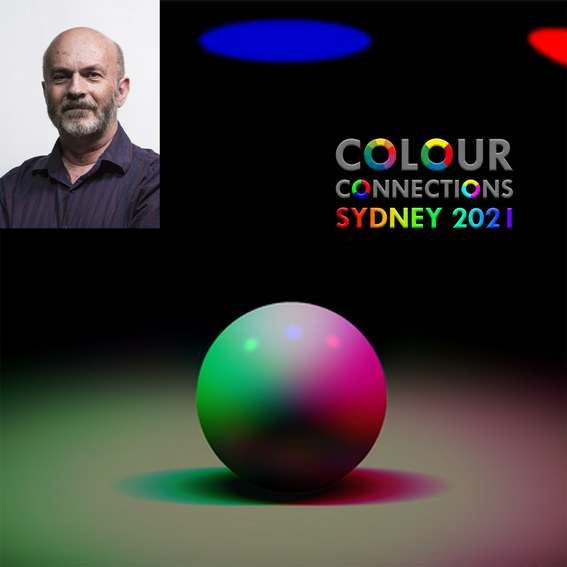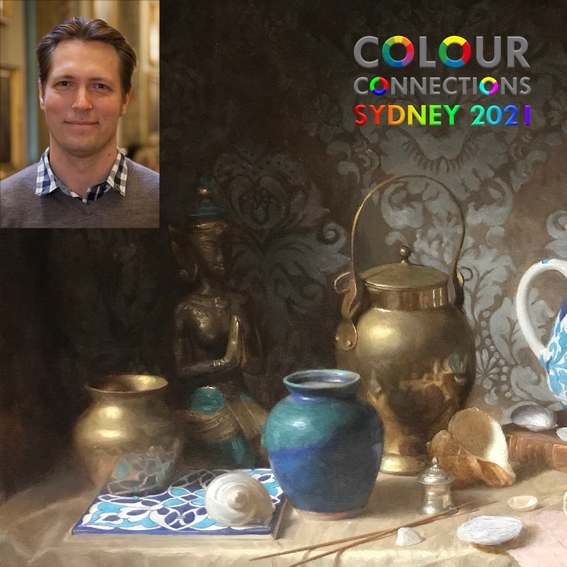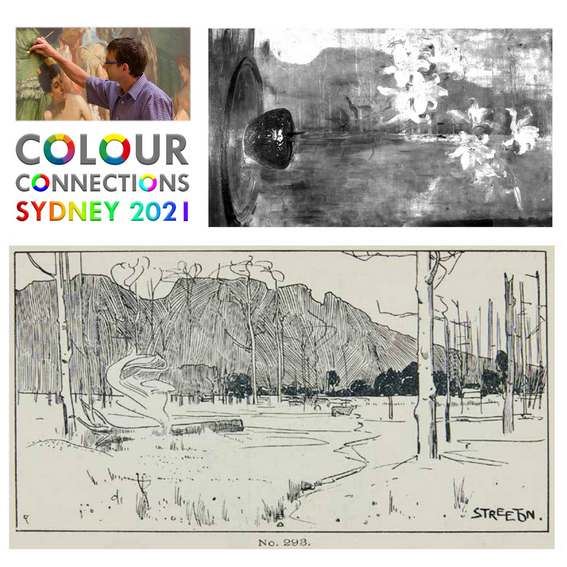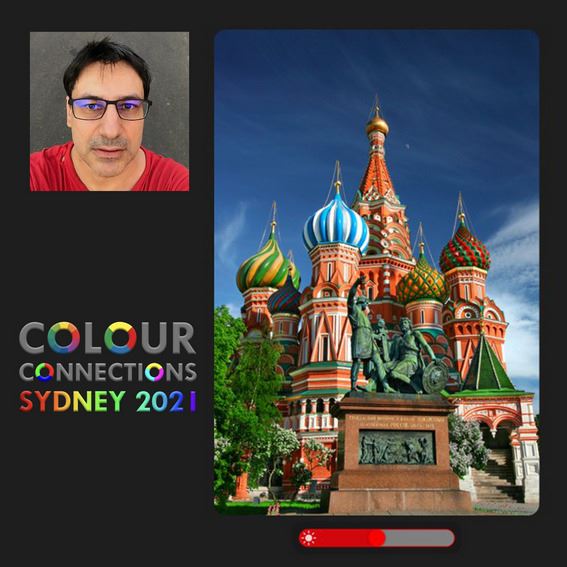.jpg)
Please use this page to register if you only want access to the live presentations and recordings for SATURDAY MARCH 20, and do not want to take advantage of our special deal offering combined full conference registration and CSA membership for 2021-2022. Zoom links and a pdf volume of abstracts will be emailed to registrants shortly before the conference.
To receive the email with the Zoom links and pdf of Abstracts, registration must be made by 12 noon AEDT on the day before the conference (Thursday, March 18). CSA Members and nonmembers who only require access to the video recordings can continue to register and pay on this page during and after the conference.
Invitation
On behalf of the Colour Society of Australia, the Organising Committee of the CSA National Conference Sydney 2021 would like to invite you to participate in our conference on the theme COLOUR CONNECTIONS . . . . . . . . .
Important dates
| First circular and call for abstracts |
04 June 2020 |
| Submission deadline for abstracts |
25 September 2020 |
| Notification of oral/poster presentation |
02 November 2020 |
| Registration opens |
08 February 2021 |
| Conference dates |
19-21 March 2021 |
About the conference theme
The theme Colour Connections acknowledges the importance of multidisciplinary approaches to colour in this era of ever-narrowing specialization. Speakers were invited to consider how their own work involving colour may be of interest and of importance in other disciplines, or to critically contrast and perhaps reconcile different specialized approaches to colour within their own discipline. We encouraged participation from designers, artists and other colour practitioners whose work references scientific or philosophical understanding of colour, from colour educators whose teaching programs span the art-science divide, and from scientific, historical and other researchers who believe that their insights about colour have relevance beyond their specialized areas of interest. We thank our speakers for their overwhelmingly generous response and can promise a diverse program discussing colour in relation to philosophy, science, design, abstract and representational painting, art history and theory, and education.
Video Recordings
Video recordings of presentations at the conference will be made available to CSA member and nonmember registrants in due course after the conference.
SCHEDULE: Saturday March 20
Please note that our schedule of speakers set out below may be subject to change without notice due to circumstances beyond our control. All times are AEDT (Australian Eastern Daylight Time) UTC+11:00.
Fundamentals of Colour
10.00 am David Briggs (NSW), Four Key Insights about Colour
Colour in Painting
10.30 am Andrew Werth (USA), Using Color Effects in Service of an Artistic Vision
11.00 am QUESTIONS/BREAK
11.30 am Ron Francis (TAS), Calculating Colour in Imaginative Realist Painting
12.00 pm Andrew Bonneau (QLD), Conceptual and Empirical Approaches to Colour in Realist Painting
12.30 pm QUESTIONS/ DISCUSSION
1.00 pm LUNCH BREAK
Colour in Digital Imaging
2.00 pm Chelsea Lehmann (NSW), The Aesthetics of the Technological Image
2.30 pm Simon Ives (NSW), Streeton’s Lost Landscape
3.00 pm QUESTIONS/BREAK
3.30 pm Tony Vladusich (QLD), Colours - One: A Photo Editing App Based on Human Colour Vision
Painting Materials
4.00 pm David Coles (VIC), Response to Demand - Colour Makers’ Ongoing Dialogue with Artists
4.30 pm QUESTIONS/DISCUSSION
Phenomenology of Colour
5.00 pm Joaquim Santos (Portugal), Phenomenology of Colour. Towards an Extensive Cultural Paradigm - paradeigma
5.30 pm QUESTIONS and CLOSE

David Briggs (NSW), Four Key Insights about Colour
"The colour that we see a light or an object as having is not a physical property. It is the WAY in which we perceive a physical property - the overall amounts of long, middle, and short wavelengths present in the light or that the object is disposed to reflect – subject to both the state of the observer and the viewing conditions."
"The unconscious assumption that colours reside and mix in paints underpins the idea that the colour green is “made of” yellow and blue, which in turn underpins the hue relationships of the traditional colour wheel."
"Just three attributes, such as hue, lightness and chroma, are sufficient to describe the colours of objects, but other colour attributes are needed to describe colours of lights, to fully describe colour appearance, and to highlight other relationships among object colour perceptions: these other attributes include brightness, colourfulness, saturation, brilliance/blackness and whiteness." - Extracts from Addressing Four Key Insights about Colour by David Briggs.

Andrew Werth (USA), Using Color Effects in Service of an Artistic Vision
In his talk "Using Color Effects in Service of an Artistic Vision", painter Andrew Werth will describe how he uses color effects including chromostereopsis, optical mixing, color assimilation, and simultaneous contrast at various scales in service of his artistic vision. Color is one of the essential tools in any visual artist’s tool kit, but when one’s artistic inspirations are cognitive science and philosophy of mind, color usage becomes a part of the subject matter itself.
Andrew Werth (USA) is an abstract painter whose paintings are usually about ideas of the Self, consciousness, and making sense of reality. He has been exhibiting regularly at galleries throughout the New Jersey, New York and Pennsylvania area for more than fifteen years. After a first career as a software engineer with formal degrees from Carnegie Mellon University in Computer Engineering and Information Networking, he studied at many of the arts institutions in New York City, including the School of Visual Arts, The New School, and the Art Students League.

Ron Francis (TAS), Calculating Colour for Imaginative Realist Painting
“I work mostly from imagination, inventing scenes and trying to make them as real as I can. This causes me to study how things work in the natural world, particularly how light interacts with objects and environments, so I can more easily recreate it on canvas. Subjects vary considerably from one painting to the next, ranging from recreating past events or dreams, to comments about what I may find odd or ironic about things people do.” - Ron Francis
Ron Francis is a self-trained, Tasmanian-based painter who has exhibited since 1980. After a long stretch painting trompe-l'œil murals from 1988 to 2006 he returned to fine art painting. Ron now exhibits with Scott Livesey Gallery, Melbourne, and a selection of his haunting paintings can be seen on his website at http://www.ronaldfrancis.com/'

Andrew Bonneau (QLD), Conceptual and Empirical Approaches to Colour in Realist Painting
Andrew Bonneau will explore some of the differences between an empirical and a conceptual approach to drawing and painting from life, which has implications for how the artist understands hue, value and chroma. Although both approaches can give a satisfying result and a convincing illusion of form and space, Andrew will investigate some of the philosophical differences between these two ways of looking at the world and the subtle differences in result that they reveal.
Tasmanian-born painter Andrew Bonneau lives and works in Cairns, Qld. He studied at the National Art School, the Charlie Sheard Studio School and the Julian Ashton Art School in Sydney, and for three years under Jacob Collins at the Grand Central Academy of Art in New York. He has been selected as finalist for many national painting awards including the Adelaide Perry Drawing Prize, the AME Bale Travelling Art Scholarship (three times}, the Moran Portrait Prize (three times) and the Archibald Prize, and has been commissioned by the National Portrait Gallery in Canberra. http://www.andrewbonneauart.com/index.html

Chelsea Lehmann (NSW), The Aesthetics of the Technological Image
Chelsea Lehmann is a Lecturer in Drawing at the National Art School and completed her PhD at UNSW Art & Design in 2019 on the topic "The articulate surface : painting and the latent image". In her presentation Chelsea will explore some of the ways that advanced imaging technologies and their outcomes can present, instigate, or even ‘be’ art, by responding to selected examples of technological imaging applied to significant historical artworks.

Simon Ives (NSW), Streeton’s Lost Landscape
Simon Ives is a Paintings Conservator at the Art Gallery of New South Wales and has also worked at the Tate Gallery in London and the National Gallery of Australia. He holds a Masters in Fine Art Conservation specializing in easel paintings from the University of Northumbria (UK) in 1994. Simon has written articles on artists materials and techniques for a range of publications and is interested in innovative digital presentation of conservation analysis. Simon’s presentation “Streeton’s Lost Landscape” tells the story of the restoration of Arthur Streeton’s major early painting “Gloucester Buckets (sunny)” (1894) and the rediscovery of its lost companion painting, “Gloucester Buckets (grey)”, beneath a floral still life painted by Streeton in 1909.

Tony Vladusich (QLD), Colours - One: A Photo Editing App Based on Human Colour Vision
Before switching to software development in 2016, Tony Vladusich worked as a computational neuroscientist in Australia, Europe and the US (Boston University and Brandeis University), researching the computational foundations of human color perception. He published a series of 6 papers between 2012-2015 on his theory of gamut relativity, which provided a unified account of many phenomena in brightness, lightness, gloss & transparency perception. In his talk "Colours - One: A Photo Editing App Based on Human Colour Vision" he will discuss his new app for the Apple ecosystem that represents an extension of the central ideas of gamut relativity to the perceptual dimensions underlying lightness, hue and saturation perception.

David Coles (VIC), Response to Demand - Colour Makers’ Ongoing Dialogue with Artists
David Coles is the founder and Managing Director of Langridge Artist Colours in Melbourne and author of 'Chromatopia, an Illustrated History of Colour' (Thames & Hudson, 2018). David studied Fine Art (Painting) at Bristol in the UK and then worked in London for the renowned art materials suppliers Cornelissen & Sons and Roberson & Company. He arrived in Australia in 1990 on holiday and two years later founded Langridge, now one of the world’s most respected makers of artists’ oil paints.
David's presentation “Response to demand - Colour makers’ ongoing dialogue with artists” will discuss the impact on contemporary colour perception of digital devices, the resulting demands from artists for paints having equivalent colours, and how paint makers respond to these demands.

Joaquim Santos (Portugal), Phenomenology of Colour. Towards an Extensive Cultural Paradigm - paradeigma
Joaquim Marcelino Santos is a Professor at the Lusiada University, Faculty of Architecture and Arts, Lisbon, where he lectures in History of Art and Theory of Architecture. He is also a research fellow at the Center for Research in Territory, Architecture, and Design (CITAD), where he incorporates the research group on Architecture and Design and the Colour Laboratory. Joaquim holds a PhD from Tampere University of Technology, Finland, where he wrote his dissertation on the iconic work of the Finnish architect, Alvar Aalto. He has presented papers and posters at the AIC Congress 2013 Newcastle upon Tyne, AIC 2018 Lisboa and AIC 2020 Avignon.
One of Joaquim’s main areas of research interest is the phenomenology of colour, and we are honoured to have him present at Colour Connections on the topic "Colour: Towards an Extensive Cultural Paradigm – Paradeigma".
Copyright & Legal Obligations
All information in the abstract submission, including author’s names, affiliations, authors order of listing, and the content of abstract, will be used in the conference publications. The contributor carries legal obligations of the abstract; any violation to a third party’s right will be the responsibility of the contributor him/herself.
